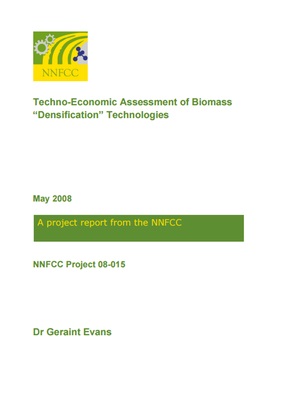 Highlights
Highlights
- Background on existing biomass densification techniques
- Discussion of the strengths and weaknesses of four main densification methods
- Investigation into available biomass feedstock in the East Midlands region of the UK
- Analysis of how this available feedstock translates into densification opportunities
Reasons
to buy
- To advise companies interested in densification on the present state of development of each available route
- To investigate the opportunities densification provides for bioeconomy development
- To highlight potential bioeconomy development opportunities in the East Midlands area
Number
of pages: 139
Accessibility: This item is available to all NNFCC Business Support subscribers or through individual purchase
Summary
Concerns over the environmental impact of fossil fuel use, security of supply and the increasing cost of oil have resulted in an increasing desire to develop advanced biofuel and bioenergy technologies. This will ultimately drive the increased use of biomass as a resource for the production of energy, fuel and chemicals. Increasing interest from both industrial and governmental institutions is evidenced by the rapid development of the bioenergy and biofuels industries throughout the world.
Biomass “densification” technologies have the potential to add value to agricultural, horticultural, forestry, wood processing (i.e. sawmills), local authority (as an alternative to composting) and wastes businesses within the East Midlands Region. It provides an additional diversification opportunity to the rural economy and permits realisation of efficiency gains. These gains can be achieved through improved logistics, reduced infrastructure and equipment requirements compared to untreated biomass systems and combustion (and gasification) efficiency gains.
You may also be interested in: